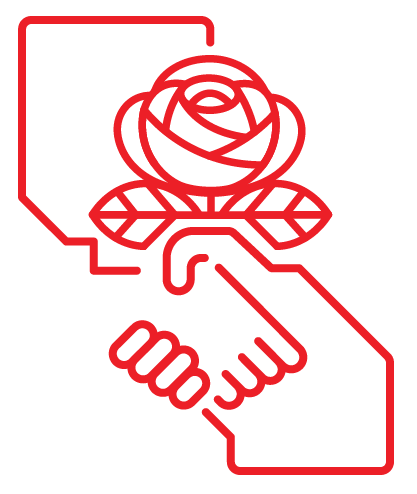Session 4 - Socialists in the Labor Movement Now
Materials for Session Four
"Unionism and Socialism" (1907) by Eugene V. Debs
Advance reading
“What is the Importance of Leftists in the Struggle?” by Helena Worthen and Joe Berry
Advance reading
“Current Issues in the Labor Movement” (2022) by Joe Berry
Advance reading
Labor Movement Beyond the NLRA? (2025) by Benjamin Y. Fong
Donald Trump’s Anti-Union Offensive and How We Stop It (2025) by Eric Blanc
0:00 – 10 minutes
I. Check in
0:10 – 15 minutes
II. Debs Speech
Large Group Discussion
Prompt: How does Debs see the relationship between unions and the Socialist Party?
Key Points
Union struggles build the class consciousness of workers and this will bring them to socialism.
Socialists should support all union struggles.
Debs sees unions as strictly economic while the Socialist Party is the political and electoral representative of the working class.
0:25 – 25 minutes
III. Socialists and Unions
Large Group Discussion
We will draw on the Worthen and Berry article for a final look at the relationship between socialists and a strong labor movement.
Prompt: Are there any comments or questions you had about that article? (5 minutes)
Prompt: Socialists are necessary in building a strong labor movement. Why? What key roles did they play in our two case studies last week? (10 minutes)
Give some examples (e.g. CPers in the FE and in the Flint sit-downs, ISers in TDU). State that there are a lot of answers, then repeat: Why?
Key Points
Political vision and analysis about unions and organizing strategy
Provided leadership and/or acted as a catalyst for change
Connections to other workplaces, unions, and activists
Help build a sense of collective power and agency
A commitment to breaking down racial divisions and other divisions in the working class through struggle
Individual commitment
Staying active during the inevitable downturns in the struggle
Prompt: Why do socialists see a strong labor movement as necessary to moving toward socialism? (10 minutes)
Link back to questions in Session 1, “who is the working class?” and “why is the working class important?”
Key Points
Only institutions capable of halting production – stops the system in its tracks
A school of class struggle for the working class
Worker / working class agency – through struggle, build workers’ confidence in speaking out and standing up for themselves
Class consciousness – through struggle, workers can come to see themselves as part of a class
Build power – learn how to build, acquire, and exercise power over their lives and the world; learn how to organize, administer, and lead
Can bridge racial, gender, ethnic, and other divide through struggle
Promote mutuality and cooperation
Can change the balance of power between classes
0:50 – 5 minutes
IV. Break
0:55 – 30 minutes
V. Current Issues in Labor
Large Group Discussion
Discuss an article about a local and / or current labor struggle, chosen by the group leader.
Prompt: Can we apply some of the ideas we have discussed in this group?
1:25 – 15 minutes
VI. Getting Involved
Large Group Discussion
Prompt: Can you see yourself being active in the labor movement, either as a worker organizer or in supporting organizing workers?
List on whiteboard if available
Insert any local resources you think appropriate or useful to mention
How you can get involved:
Organize in your workplace (and your union if there is one)
If you’d like to organize your workplace into a union, DSA is a sponsor of a national Emergency Workers Organizing Committee (EWOC) to help you do that. EBDSA has its own branch of this effort.
EBDSA has a Labor Solidarity Committee. (Does your chapter have any effort like this? Is there another local strike support organization?)
You can also just show up at picket lines and talk to strikers. They’ll feel supported and you’ll learn more about unions.
Read Labor Notes— there is an online newsletter or a larger subscription newsletter.
1:40 – 20 minutes
VII. Closing
Solicit feedback on the whole series
Possible questions to spark feedback:
What did you learn that was new?
How might this series change how you will function as a socialist on your job(s) in the future?
How could we make this series better?
Let participants know a survey will be distributed in the near future
